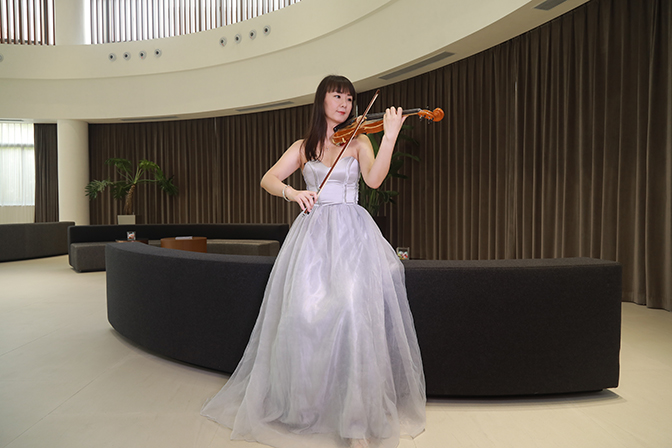
The violin consists of more than 30 parts. Its main components include scroll, body, neck, peg, string, bridge, chin rest, nut, belly, ribs, soundpost, etc.
The violin has four strings, which are divided into the first string ( E string ), the second string ( A string ), the third-string ( D string ) and the fourth string ( G string ). The violin body ( sound box ) is about 35.5 cm long, which is composed of a curved panel, backplate and ribs. The panel commonly used spruce production with a soft texture. The backplate and ribs are made of maple with a hard surface. The scroll and neck are made of the whole maple, and the fingerboard is made of ebony. The tone quality of a violin basically depends on its wood and corresponding structure, on the vibration frequency of the wood and its response to string vibration. A high-quality violin can spread the fundamentals and overtones of every sound produced equally sensitively.
The violin has four strings, which were initially empty strings made of sheep intestine. Since about the 18th century, bass G strings have often been wrapped with silver wire, making them sensitive to reaction. In modern times, G, D, and A-lines are wrapped with sheep intestine string or steel wire wrapped with metal wire, and nylon string is also used in the evening. E string is replaced with steel wire string to make it sound better in the high pitch area.The violin has four strings, which were initially bare strings made of sheep intestines. Since about the 18th century, the bass G string is often wrapped with silver wire to make it sensitive. In modern times, G, D and A strings are wrapped with sheep gut or steel wires wrapped with metal wires, and nylon strings are also used recently. E-string is changed to steel wire string to make its timbre better in the high range.
The violin can be divided into electric violin and xylophone, and their sound principle is very different.
The main difference between the electric violin and the ordinary violin is that the electric violin does not use the soundbox. Unlike the ordinary violin, the electric violin doesn't sound by air vibration in the soundbox through the sound post. Therefore, the string's vibration is picked up by several magnetic pickups ( like the electric guitar ) below the root of the string and then amplified by sound. Practitioners can also use headphones, which will not affect others during practice, so the soundbox of the electric violin is just a decoration. The electric violin can play without electricity, but that sound is not like a violin, and it is tiny, like a mosquito barking. Many larger violin companies sell electric violins. One has its resonator, which is the same shape as an ordinary violin, but with a different sound pickup similar to the case in the guitar family; The other is with electric tuning resonance. There is no resonator, and it looks 'hollowed-out. This kind of electric violin picks up, amplifies and tunes the weak vibration through the electronic circuit.